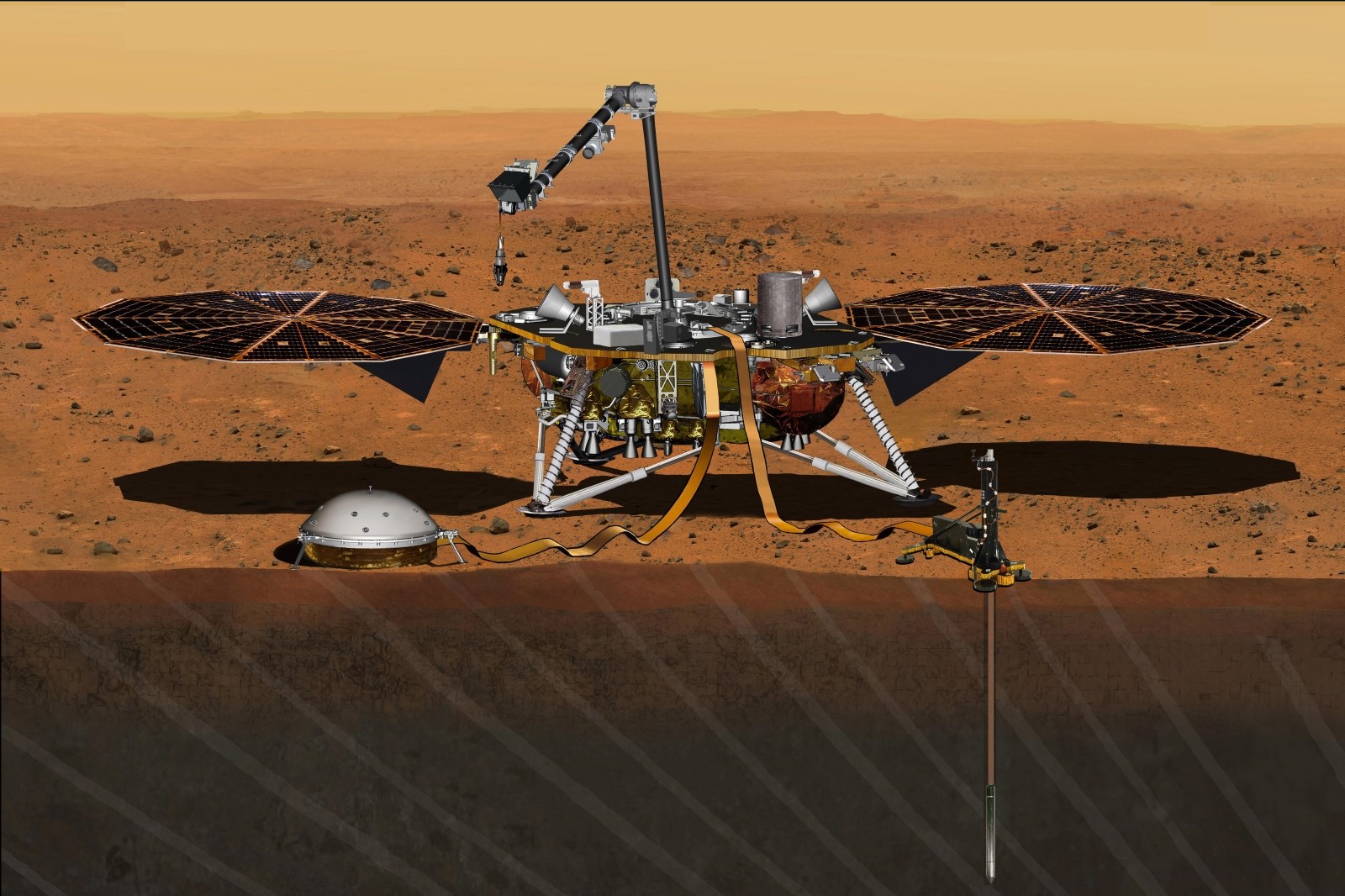NASA engineers are still trying to figure out why the main tool of the Martian lander InSight stuck in the course of the earlier drilling of Martian soil. During the 50th annual Lunar-planetary science conference, the mission’s management team reported that over the next two weeks, the InSight team will try to decide the exact reason the Heat and Physical Properties Package (HP3) drill tool, which is tasked with delving 3-5 meters below the surface of Mars, is stuck at a depth of only about 30 centimeters.
The drilling rig of the module, known as the mole, began the first phase of drilling the Martian surface on February 28. According to Tilman Spon from the German aviation and space center, where the HP3 drill probe was developed, after 4 hours of activity the drill module was able to deepen by about 30 centimeters. However, during the second 5-hour drilling session, held on 2 March, the mole was unable to go lower, after which the mission team decided to suspend further attempts to deepen the probe.
At a depth of 30 centimeters, we met something. Still not sure whether the ‘mole’ is blocked by a small stone or a layer of pebbles, or it just jammed. This could easily have happened because he entered the ground at an angle of 15 degrees, said Tilman Spon at the conference.
Over the next few weeks, NASA and DLR scientists tried to figure out what exactly happened to the drill – whether it jammed or just ‘trampled’ on the spot, faced with a large stone. The answer to this question, as noted at the conference, Spon and Bruce Banerdt, head of the InSight mission to NASA, is not yet due to the inconsistency and ‘stochasticity’ of the data that the probe transmitted to Earth.
As noted, scientists do not yet know how the soil is arranged at the point where the probe drill was immersed. For example, it may consist of a relatively homogeneous and dense matter, and is a set of many large pieces of pebbles.
This interferes with the unambiguous interpretation of seismic data – it is possible that the drill is not jammed, and that he just ‘dangles’, jumping from one small stone to another. Therefore, engineers NASA and DLR can clearly say what happened and how to do scientists.
To resolve this issue, Spon and Banerdt offer a risky option. They are going to appeal to the heads of space agencies with a proposal to include the drill for 10-15 minutes at the end of March and at the same time to check its work with the help of a seismometers and InSight cameras. In parallel with this, it is proposed to conduct a similar experiment with an exact copy of the HP3 drill on Earth – its DLR specialists want to bring in the near future to the NASA jet propulsion Laboratory (JPL). Comparing the results of observations of the installation on Mars and on Earth, scientists hope to understand the cause of the incident, and possibly save the drilling rig HP3 Martian lander.
Image Credits: NASA /JPL-Caltech


1 comment
It looks like the support structure has shifted significantly. At 3 kg let’s say the mass of the actual probe is 1/3 that at 1 kg. That’s only .38 kg on Mars (.84 lbs)
At that weight, does the mechanical hammer just cause the probe to bounce at near-surface? This could explain the apparent shifting of the whole 3 kg (1.13 kg or 2.49 lbs on Mars) rig.